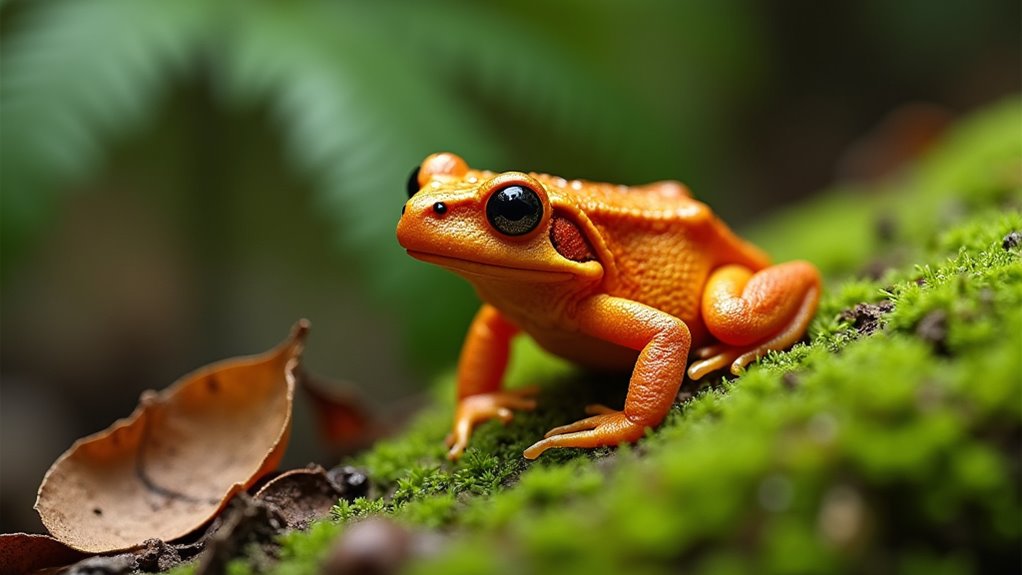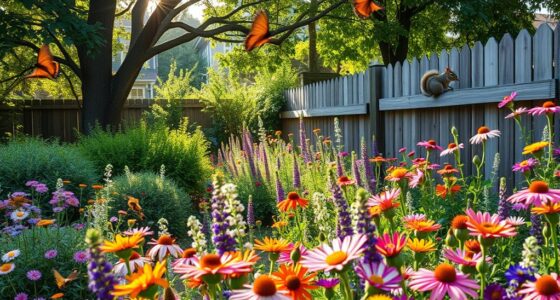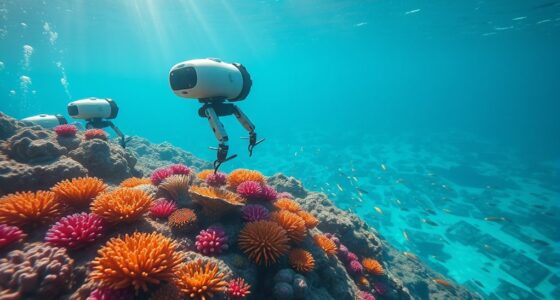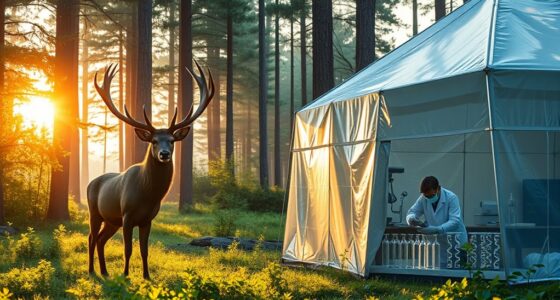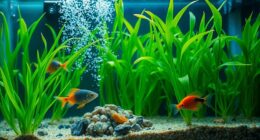Many animals and plants in North America are endangered because of habitat loss, pollution, and human activities. Forests, wetlands, and grasslands are shrinking due to farming, building, and development. Protecting these habitats, supporting conservation efforts, and staying aware of endangered species can help save them. Technologies like drones and breeding programs also play a role. If you want to learn how you can help and more about these species, there’s lots to discover.
Key Takeaways
- Many North American animals and plants are endangered due to habitat loss, pollution, climate change, and illegal hunting.
- Habitats like forests, wetlands, and grasslands are shrinking, threatening species such as the Florida panther and whooping crane.
- Conservation efforts include creating protected areas, breeding programs, habitat restoration, and raising public awareness.
- New technologies like drones, robotic monitoring, and biotechnology help scientists protect and recover endangered species.
- Kids can help by supporting conservation organizations, recycling, planting native plants, and learning about endangered species.
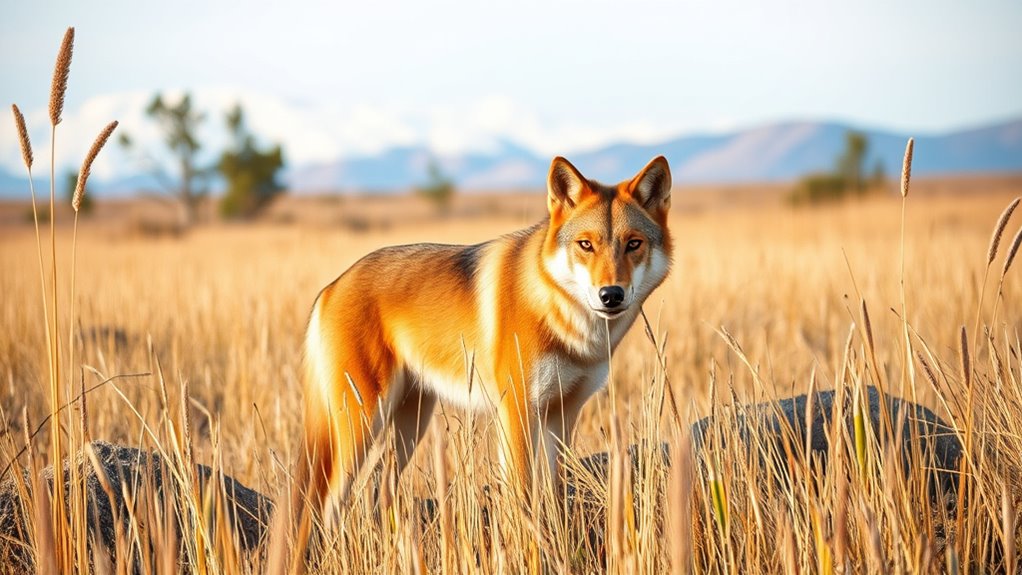
Have you ever wondered how many species in North America are teetering on the brink of extinction? It’s a serious question because many animals and plants are in danger, and their habitats are disappearing faster than ever. Habitat loss is one of the biggest threats facing these species. When forests are cleared for farms, cities, or roads, animals lose the places they need to live, find food, and raise their young. Wetlands get drained for development, and grasslands are turned into farmland, leaving fewer safe spots for creatures like the Florida panther or the whooping crane. Without their homes, these animals struggle to survive, and their numbers decline rapidly.
But it’s not just habitat loss that puts species at risk. Human activities like pollution, climate change, and illegal hunting also play a role. That’s why conservation efforts are so important. Conservation is all about protecting and restoring the habitats and the animals that depend on them. People, scientists, and organizations work together to create protected areas like national parks and wildlife refuges, where animals can live without the threat of development. These areas act as safe havens for endangered species, giving them a chance to recover. Conservation efforts also include breeding programs, where animals are raised in captivity and then released into the wild to boost their populations. Education campaigns help raise awareness so everyone can understand why it’s crucial to save these species before they’re gone forever.
Additionally, technological advancements such as robotic monitoring help scientists track and protect endangered animals more effectively. Emerging conservation technologies are transforming how we safeguard threatened species, making protection efforts more efficient and precise. For example, drones are now used to monitor large or hard-to-reach habitats, providing real-time data that helps in quick decision-making. Increased use of biotechnology also offers new ways to help populations recover, such as developing disease-resistant animals or restoring genetic diversity. These innovative tools are part of a broader strategy that emphasizes ethical leadership, where responsible practices ensure the well-being of both wildlife and ecosystems. You might wonder what you can do to help. Even as a kid, you can make a difference. Supporting organizations that focus on habitat preservation or wildlife protection is a good start. You can also learn more about endangered species and share what you discover with friends and family. Simple actions like recycling, planting native plants in your yard, or avoiding products that harm wildlife can make a positive impact. The more people understand the importance of protecting habitats, the better chances these animals have to survive and thrive.
Frequently Asked Questions
How Do Endangered Species Affect Ecosystems in North America?
You might not realize it, but endangered species play a crucial role in ecosystems. When they decline due to habitat loss or invasive species, it can disrupt food chains and balance. This imbalance affects other plants and animals, leading to further ecological problems. By protecting endangered species, you help maintain healthy ecosystems, ensuring that habitats stay balanced and resilient for future generations.
What Are the Most Critically Endangered Species Right Now?
You might think the most critically endangered species are just numbers, but they’re real animals fighting for survival. Right now, species like the vaquita, Javan rhino, and kakapo are at the brink due to habitat loss and insufficient conservation efforts. These animals are hanging by a thread, so it’s essential to raise awareness and act fast. If we don’t, they’ll be gone before we know it—time to face the music and help!
How Can Kids Help Protect Endangered Animals?
You can help protect endangered animals by getting involved in habitat preservation efforts and supporting educational programs. Participate in local clean-ups, plant native species, or advocate for protected areas. Educate others about the importance of conserving wildlife, sharing what you learn through school projects or community events. Your actions raise awareness and contribute to the survival of endangered species, making a real difference in their future.
Are Any Endangered Species Recovering Successfully?
You might wonder if any endangered species are recovering successfully. Conservation success stories show that dedicated efforts can make a difference. For example, the bald eagle’s population has rebounded thanks to protection laws and habitat restoration. Kids like you can help by spreading awareness and supporting conservation programs. These endangered species recovery efforts prove that with teamwork and dedication, we can give vulnerable animals a second chance at survival.
What Causes Most Species to Become Endangered in North America?
You might wonder what causes most species to become endangered in North America. Habitat destruction from urban development and agriculture, along with pollution sources like chemicals and waste, play major roles. These threats damage ecosystems and reduce food and shelter for wildlife. When habitats shrink or become contaminated, animals struggle to survive. Protecting natural areas and reducing pollution are essential steps to help prevent species from becoming endangered.
Conclusion
As you explore North America’s wild friends, remember they’re like delicate stories waiting to be told. By helping protect these gentle creatures, you’re ensuring their voices continue to echo through forests and streams. Every small act, like planting a tree or keeping our waters clean, adds a soft brushstroke to their future. Together, we can keep this vibrant chapter of nature alive, so future kids can also marvel at its quiet beauty and wonder.
